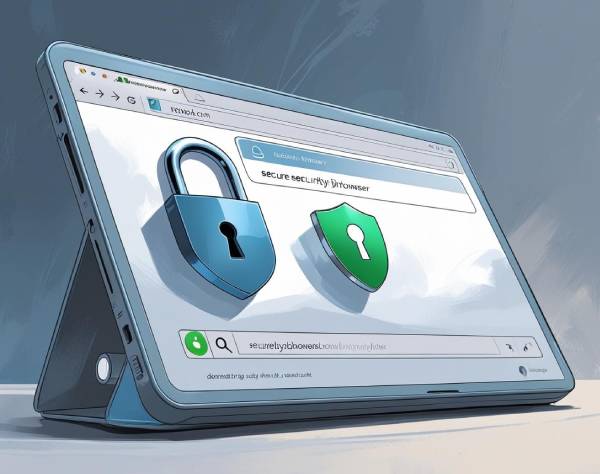E-discovery for lawyers who like paper


Originally published by Daily Journal.
Lawyers may earn 1 MCLE credit by visiting https://www.callawyer.com/mcle/247
Written by Bob Mehr, Senior Legal Services Advisor, DriveSavers, Inc.
Lawyers everywhere who have historically conducted paper discovery are constantly faced with the challenge of e-discovery. In truth, the electronic process is not that different from the paper process these lawyers may be accustomed to, and may even be easier to handle, once they grasp the new process.
This article is to help people who are rooted in paper to understand, appreciate and even grow to like e-discovery.
Why e-discovery?
The pace of change in technology is moving at lightning speed. Seemingly overnight, we went from having a computer in every home, to having a computer in every back pocket. In equal proportion, there has been a shift in where we find evidence for criminal or civil litigation. As a result, electronic evidence can make or break a case.
What is the EDRM?
The Electronic Discovery Reference Model is the industry guide for finding, processing and producing digital evidence.
At first glance, the EDRM may be confusing. This is because, while it is mostly a linear roadmap, there are some analytical options that allow the practitioner to “choose a new adventure” that is not feasible in the paper discovery process. Each step in the process is followed up by one of multiple choices, and some steps occur throughout the process rather than as one step in the process. The most confusing part is that most of the steps shown in the model must be taken at some point, even if not necessarily in the order shown, and which step occurs next is determined by several factors that come up during the current step.
But don’t worry. We’re here to help simplify this for you and make it easier to follow. Let’s get started.
Analysis
It may seem strange that we are beginning with analysis, since the visual representation of the EDRM shows this aspect of e-discovery as a step in the middle of the process. In truth, analysis occurs throughout the entire operation, in every step.
Analysis is the evaluation and categorization of all electronically stored information, or ESI, by content and context, including subject matter, authors and other factors. The purpose is to help the legal team make informed decisions regarding strategy and scope, based on information collected.
In a paper world, analysis would involve thinking critically about the files, documents, mail and other information available in each step of the process in order to move efficiently onto the next step.
Electronically, IT and e-discovery experts use various software and skills to analyze data during each step and then select which data is relevant and prepare it for the next step.
Information Governance
Information governance isn’t so much a step in the e-discovery process as preparation for it. It’s like cleaning your house before having company. Or rather, it’s like keeping your house clean at all times just in case you have an unexpected guest.
Information governance is the management of ESI, from initial creation all the way through to its destruction. The purpose is to mitigate any potential risk or expense if ESI is ever requested for legal discovery.
In a paper world, information governance is like using filing cabinets, stacks of boxes and storage closets to keep paper files in the event they are ever needed in the future. Like paper, ESI must be well organized so it can be sorted through and relevant information can easily be found when it is needed or requested. Without proper organization and labeling, it would take far longer to find needed paperwork and hourly billing would expand to fit the chaos. Electronic files can be even more difficult to find if they are not organized properly. This, too, would add expense to the legal process.
Paper might be organized, filed and stored by a secretary or legal aid. Information governance, however, is most often stored and organized by the IT department.
Identification
Identification is locating where you might find potential electronic evidence, who might be the custodians of that ESI and determining its scope. In other words, what are you looking for and whose computer, phone or cloud storage could it be on.
In a paper world, you would ask who would have touched those papers and why. Who wrote it? Who sent it to whom? Who made copies of it? Who has it now? Who should have it? Who should not have it?
These same questions apply in ESI identification. In both paper and electronic discovery, identification often involves interviewing custodians, or owners, and possible custodians of relevant ESI to determine what information may exist and where to look for it.
Electronically, this responsibility falls to management and, ideally, includes aid from IT, e-discovery experts and the legal team.
Preservation
Preservation involves making sure that potential electronic evidence is protected against changes, destruction or tampering of any kind. This is often implemented through use of a legal/litigation hold.
A legal/litigation hold letter or directive is generally sent by a company’s legal team to the company employees who have been named in the identification process as having access to potentially relevant files. This documentation relays instructions not to delete ESI or discard paper documents that may be relevant to an active or anticipated legal case. It is recommended that the recipients of a legal hold return acknowledgement that they will not alter this data in any way.
If it has been determined that a legal hold may not be sufficient in protecting potentially relevant ESI, further actions may be taken, including restricting access to certain data so it can only be “viewed” and not altered or even confiscating devices such as company-owned computers or smartphones.
In a paper world, preservation would still include a legal hold sent to employees who have been identified as custodians of paper documents that must be kept unaltered. These paper documents may even be collected by the custodian’s manager and locked in secure filing cabinets or closets for safe keeping.
Electronically, preservation is enacted by the company IT department with help from an e-discovery service and monitored by the company legal team.
Collection
Collection occurs when ESI or equipment must be gathered into one place for the purposes of processing and review, which we will explain shortly. This may be accomplished by transferring data from one place to another using an external drive or other mechanism, or it may even mean collecting actual devices, such as computers and smartphones.
If it was determined in the identification step that evidence could potentially be in the form of a Word document or Excel file and that Employee X touched it at some point, every one of Employee X’s Word and Excel files are going to be collected without much or any regard to their actual contents. Often, collection is purely a data dump, or transfer of all the ESI from the custodian’s computer to the e-discovery team’s computer, and possibly a collection of the custodian’s computer itself.
In a paper world, this would mean collecting all documents, files, etc. that may possibly include relevant information and putting them in one place where they can be reviewed by attorneys. This may even mean collecting every file contained in a filing cabinet. This may also be thought of as grabbing every piece of mail belonging to a person so it may be gone through later to find a single charge on a single credit card bill.
Electronically, collection is conducted by the IT department, generally with help from an e-discovery service.
Processing
Processing involves sorting through all the electronic data that has been collected. E-discovery experts use specialized software to sort through these large volumes of information from multiple sources and formats in order to identify which data is to be kept for further analysis and review.
Data processing generally includes data searching based on keywords, metadata (creation date, author, file size and other information about the ESI) and other factors. Using these tools, the remaining ESI is reduced to a relevant data set. The goal is to keep ESI that may have potential evidence and eliminate all ESI that definitely does not include potential evidence. The data selected through processing is then more deeply examined in the review step of e-discovery.
In a paper world example in which we are searching for a specific credit card charge, this would mean that after sorting the mail (information governance) and collecting all mail belonging to a specific employee (collection), we would now open all the mail, put aside all bills from the specific credit card company that the charge was made to, and discard the rest of the mail which certainly does not contain the charge in question.
Review
One of the most expensive and time consuming procedures, review involves delving deep into the remaining ESI and looking through each item with actual human eyes (and some help from artificial intelligence) in order to finally determine relevant information and potential electronic evidence.
This is when lawyers really roll up their sleeves. Along with paralegals, lawyers review the culled-down documents and files in order to determine the responsive and potentially relevant data, and to identify and categorize privileged information such as lawyer/client communications.
In a paper world, lawyers and paralegals would read each letter, document, credit card statement, piece of mail and all other information that make it through the previous steps. These, they would sort further into potential evidence, private conversation and irrelevant information.
Electronically, this is performed by lawyers and paralegals, just as it would be with paper.
Production
Production involves outputting the final set of ESI in a format that will be accepted by the courts and/or opposing sides of a case.
As with paper discovery, every page of each document, image or other piece of data that is produced should include a unique, sequential identification number, traditionally referred to as a “Bates Stamp number.” Bates numbers serve two purposes: (1) to keep everyone on the same page when going over electronic evidence and (2) to easily compare a piece of paper or ESI to its original and ensure there has been no tampering or altering of evidence.
Presentation
Presentation is the final step in the e-discovery process. This is when the legal team finally shares its findings with the court and/or jury at a deposition, hearing, trial or other legal proceeding involving an audience.
But wait — is this the final step? Well… It can be. It also might not be.
At times, presentation of ESI is performed not to present electronic evidence, but rather to elicit further information or validate existing facts. This may, in turn, bring us all the way back to preservation and collection of potentially relevant data. That potentially relevant data would then need to be processed, analyzed, reviewed, produced and, again, presented.
In a paper world, this would simply mean presenting evidence in its original printed paper form. Electronically and otherwise, the legal team is responsible for presentation of ESI or electronic evidence.
Electronic Isn’t So Different
Lawyers who are already accustomed to a paper discovery process may find that electronic discovery really isn’t so different. In fact, computers make it much easier to cull a large mass of potentially relevant information down to a much smaller and more manageable set.
With so much evidence now existing on computers, smartphones and other electronic devices, electronic discovery is here to stay. The best two pieces of advice we can give:
- Conduct strict and detailed documentation of each step taken
- Involve e-discovery experts from the beginning
Involving e-discovery experts from the beginning of the electronic discovery process will ensure that forensically sound practices are used throughout the operation and resulting electronic evidence will be accepted in court.
Bob Mehr is senior legal services advisor at DriveSavers, Inc., an e-discovery services provider.
Read more or earn 1 MCLE credit (for Lawyers): https://www.callawyer.com/mcle/247




